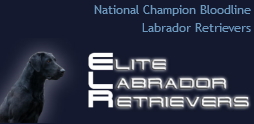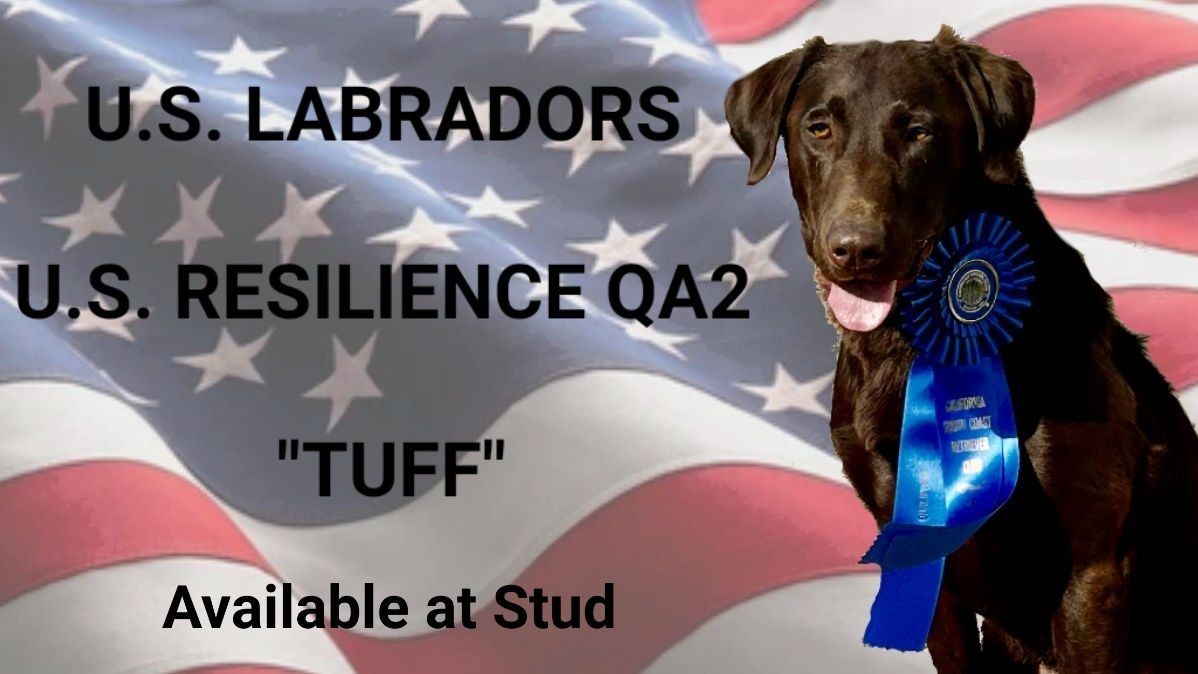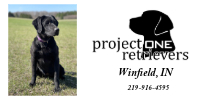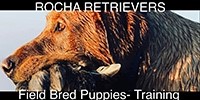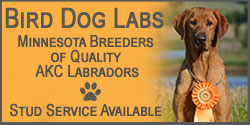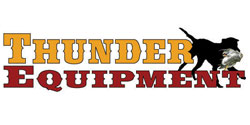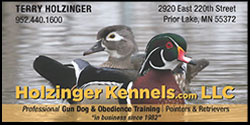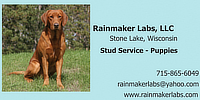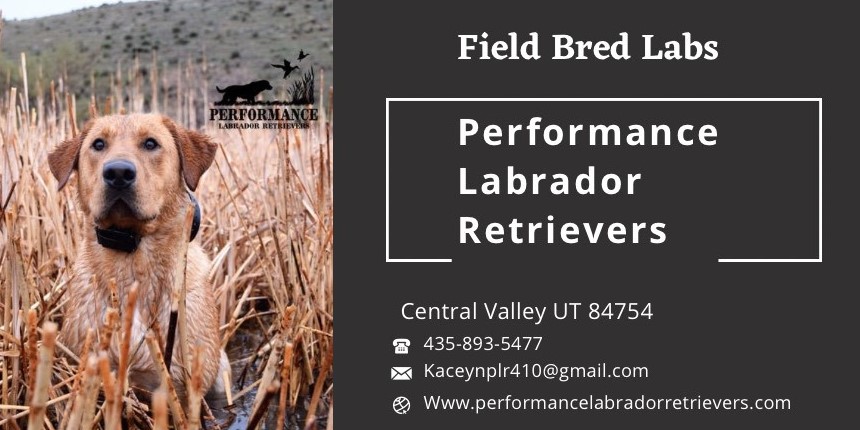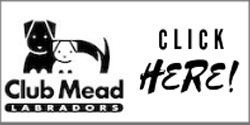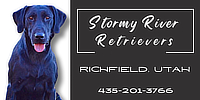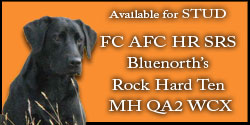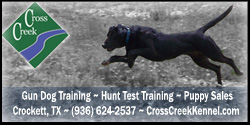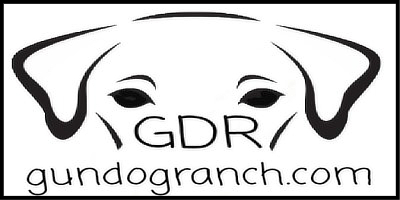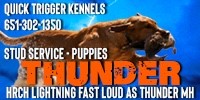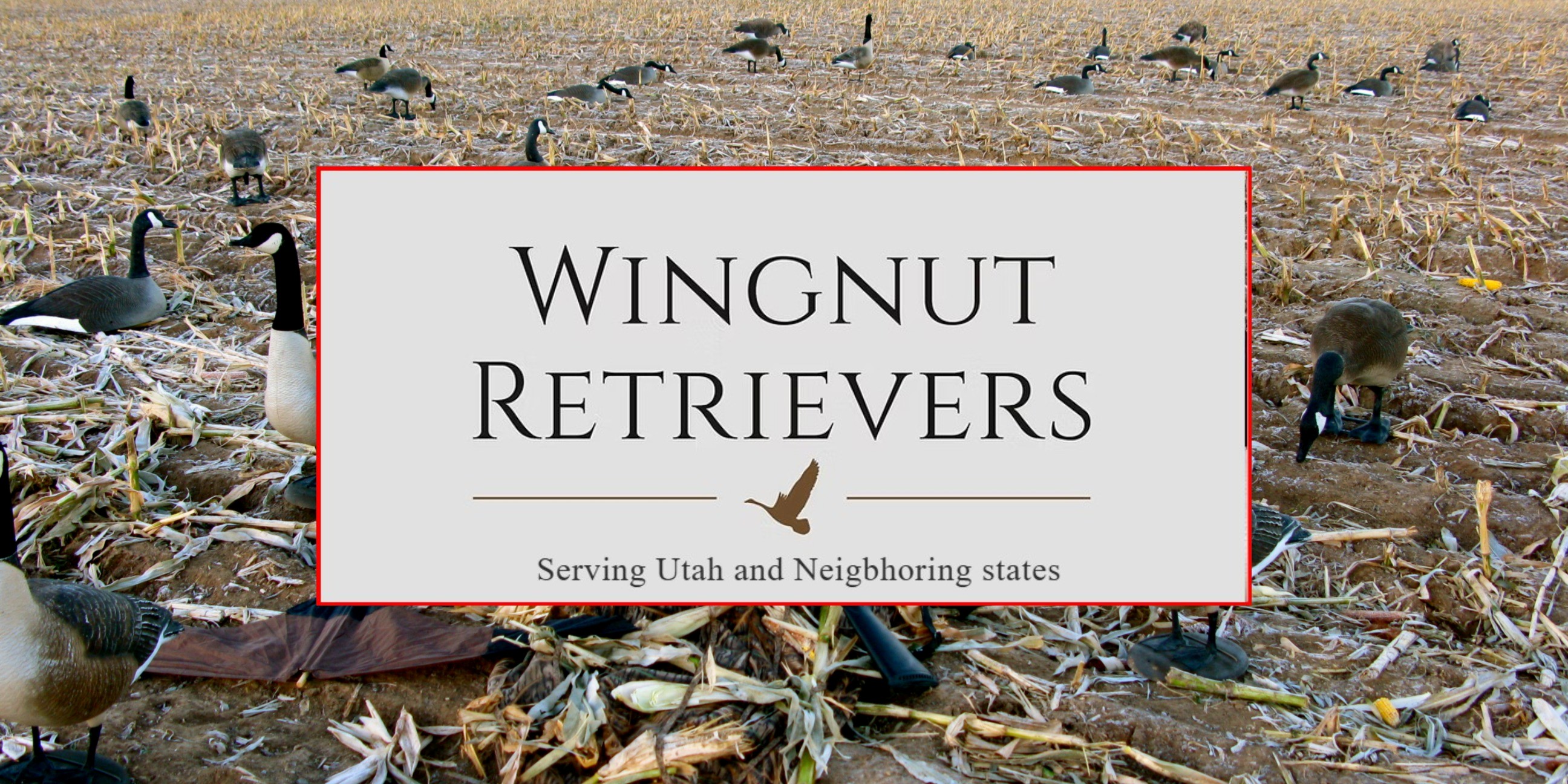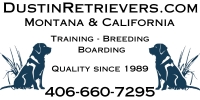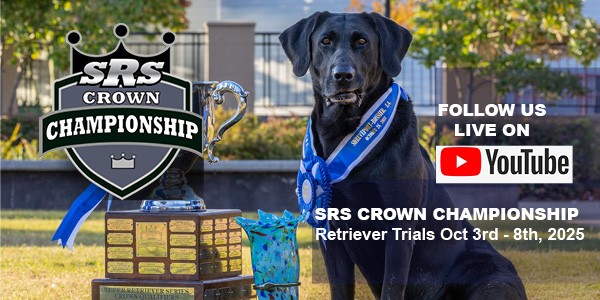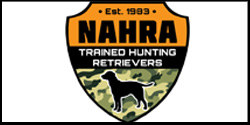| In 1910, Peter of Faskally, who had much Buccleuch blood on both sides, became the only Retriever to win two open stakes in one season and in 1911 was the first champion to compete in an entry composed entirely of Labradors.1 With no fewer than 32 of Peter's progeny winning or being placed in stakes in the decade to come, it is apparent that his stud work was a major force in extending an already formative influence. It is also known that he is the original blood line for all present day Chocolate Labradors.
Peter's performance in field trials between 1910 and 1912 was documented by the family and from the numerous cuttings they collected, it is clear that he was an exceptional gun dog whose work was admired by all commentators. As the Dundee Courier commented of the Scottish Retriever Trials in October 1910. He was sold for $103,000.
A reporter in the Kennel Gazette in 1911 said:
"I have no hesitation in describing Mr. A.E Butter's Peter of Faskally as the most notable performer of the year. After carrying off first prize at the All-Aged Stakes at the Kennel Club Trials...he went on to reap a further brilliant victory by taking first prize in the Open at the Scottish Field Trials. The winning of two such capital events in one year has never been done before. Peter to my mind combines to perfection all the qualities that are claimed for Labradors, great speed, sagacity, excellent nose, and absolutely tender mouth, and while splendidly endowed with initiative, he is not above taking a hint from his master".
Winner of the 3rd IGL Retriever Championship in 1911
Country of origin: United Kingdom
Country of residence: United Kingdom
Registration: KCSB 317P
In 1909, Mr. A. E. Butter CMG., made his debut as a Labrador handler. Previously he had trained Pointers and Flat Coated Retrievers with success. Archie Butter's contribution to the development of working Labradors is exceptional and important. Butter came from Riddell, in the Border country of Scotland from where came many good dogs and where he had ample opportunity to train his dogs. His great contribution to the breed was that he appreciated more than his contemporaries the willingness of the Labrador to be trained. And, he brought that up to a level that had never been achieved before in the handling of his dogs, firstly with F. T. Ch. Peter of Faskally, and then that dog's son F.T. Ch. Patron of Faskally.
There have been great trainers since Archie Butter, but it is arguable if there have been better. Above all he was an innovator: he appreciated that if a dog was to be really useful as a shooting dog and successful in trials, then it had to be under complete control, and capable of being guided by its master up to any distance within hearing. Butter realised that the greater the means of control he had over his dogs the quicker dead or wounded game could be gathered, moreover game would not be unnecessarily disturbed. To achieve this he adopted and adapted the methods used by shepherds in his native Border country when handling their Collies. He was the first handler at retriever trials to use hand and whistle signals to achieve this end. Butter realised that if a dog had not an opportunity to mark the fall of a bird, then the quicker it could be handled down wind of the quarry, the better the chance it had when left alone, of using the instinctive scenting power of its nose, to find it.
Men like Charles Alington and Corbet made use of his ideas and achieved success (Alington won the Retriever Championship three times): others, with lesser dog sense, who could not imitate his ways of handling, described them as 'sheep dogging'. What concerned his detractors was that his methods, "if misapplied, would result in 'over-breaking' and the obscuration of natural working qualities." While Charles Eley, a noted competitor of those days wrote, "it is at least possible that field trials may, through unwise control, evolve a type of 'field trial dog' that is as undesired by shooting people as dogs bred for show points alone, and that judges may favour a standard of breaking so severe as to limit the number of dogs that are capable of winning, and even to obscure their natural gifts." Today, when Butter's methods of control have been adopted by the majority of Field Trial handlers, the controversy that ranged through the sporting press in his day seems strange yet, echoes of it still come back into discussion when the subject of competitors, schooled in working tests, enter trials and over-handle their dogs
Because of the controversy, Butter's methods were slow in being adopted generally; indeed, years later a Scottish gamekeeper, named Dave Elliot, ran a Labrador in field trials, including the Labrador Club's stake for gamekeepers, and gained 2nd prize using similar methods to Butter, which he had also copied from shepherds in the South of Scotland where he lived. At one trial he attended in 1930 he was told by another handler' 'Do you know that you and I are the only two in the country who can handle our dogs in this way?" Whether they were the two handlers working their dogs in this manner is doubtful, but clearly Butter' s methods were not adopted readily for some time (Elliot later made mark as a trainer in the USA). If Butter's methods of handling were not readily adopted his dog F.T. Ch. Peter of Faskally certainly was.
FT Ch. Peter of Faskally, bred by Mr. Geo. Watson in 1908, was sired by Waterdale Gamester, a dog in direct descent from Malmesbury Tramp, and was whelped by Birkhill Juliet. In Peter we have one of those rare combinations that arise from time to time in field trials, a great dog in the hands of a gifted trainer. Peter entered trials in 1909, and from the start towered head and shoulders in his performance over his contemporaries, when at the height of his fame, he won the Retriever Championship in 1911, at Fakenham, the first occasion when the field in the classic was composed entirely of Labradors (his daughter Gwendoline owned by Capt. Glen Kidston was second).
As a stud force FT. Ch. Peter of Faskally was pre-eminent, and he left his imprint on the annals of the breed which the roll of time has endorsed. From the 22 he mated, no fewer than 32 of his progeny were winners or placed in stakes. He sired one very important Champion to the breed in Withington Dorando, as well as two Field Trial Champions, Patron of Faskally and Peter of Whitmore. FT. Ch. Patron of Faskally won the Championship Stake in 1913, at the time considered the finest competition since the institution of retriever trials. Ch. Withington Dorando, later owned by Lorna, Countess Howe, when put to W. Jess produced a dog W. Bream, who in turn sired Ch. W. Banter, another dog owned by Lady Howe. From Banter came Duke of Kirkmahoe, and from him Ch. Ingleston Ben.
Ben's contribution to the further development of the breed is hard to evaluate, other than to say it was enormous (see review by R. Edwards). Ben was of course mated to a large number of bitches, and produced field trial and show bench winners; not the least was of course Dual Ch. Bramshaw Bob, but in addition, from Ch. Ordchardton Dawn came Ch. Orchardton Donald whose union with FT. Ch. Kinpurnie Kate produced Ch. Kinpurnie Kam, a yellow, who in turn whelped Glenhead Jimmy. Jimmy's dam, Knappies Lass, was the daughter of Dual Ch. Bramshaw Bob - thus Jimmy was line bred to Ch. Ingleston Ben, and so both his male and female lines were in direct descent from Peter of Faskally. The importance of this to breeders of field trial dogs is that since 1956, every winner of the Retriever Championship has one, and in many cases more than one line in its pedigree going back to Glenhead Jimmy and thus to Peter of Faskally. It would seem that this male line is a sine qua non for success in competitive trials.
Archibald Butter served on the Committee of the Labrador Retriever Club from its foundation until his death in 1928, at the early age of 54; his wife, Helen, who had been a member since 1921 was given the rare distinction of being made an Honorary Member.
Figures and statistics normally make boring reading, but nothing illustrates better the dominant position assumed by the Labrador in this short period than the entries recorded in field trials in 1913, the last full season before the Great War. There were 14 field trial meetings held that year with a total entry of 247 dogs, of which 50 were Flat Coats, 13 Golden Retrievers, one Curly Coat, and 179 Labradors. The Labradors had assumed an unassailable position.
The year 1914, marked the start of the Great War. Field trials dwindled to a mere handful, and ceased by 1915.
https://thelabradorretrieverclub.com/fts-past-achievements-part-i-to-1914
https://yesbiscuit.com/2023/10/09/vintage-labrador-retrievers/
|
